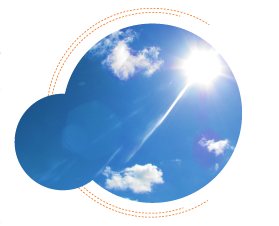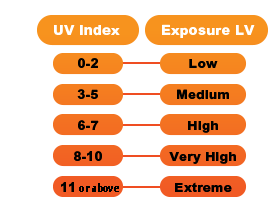
Everyone is exposed to UV radiation from the sun on a daily basis. Other sources include solariums, sun lamps and arc welders. Although UV rays are invisible and cannot be felt, they penetrate our cells, causing sunburn, ageing, eye damage and skin cancer. There are three types of UV rays, but only UVA and UVB rays reach the earth’s surface. UVC is filtered out by the ozone layer.
-
UVA – can cause premature ageing, skin darkening and wrinkles, also causes DNA skin cell damage and contributes to the risk of skin cancer
-
UVB – causes sunburn and is the major cause of skin cancer
-
UVC – the most dangerous type of UV; UVC is absorbed by the ozone layer so it doesn’t reach the earth’s surface

What affects the amount of UV light?
UV light is at its most dangerous when the sun’s rays are most direct and intense. This is affected by several factors:
-
-
Time of year – UV levels remain sufficiently high in Hong Kong all-year-round. However, the months with the highest risk are usually July to October
-
Time of day – UV rays are strongest between 11am and 4pm, and are most intense when the sun is high in the sky (around midday)
-
Reflection – UV can be reflected off surfaces such as snow, sand, light, tiles and water, and can reach your face even under a hat
-
Clouds – UV radiation is absorbed and scattered by clouds and haze, but you can still burn on a cloudy day
-
What is the UV index?
The UV index indicates the strength of UV radiation – the higher the number, the stronger the level of UV radiation. On average, Hong Kong’s UV index remains at a high level throughout the year, often reaching extreme levels during summer. The Hong Kong Observatory publishes daily reports of the UV index. Remember, UV rays can pass through cloud and pollution, so protect your skin year-round.

